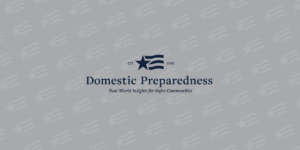
Making Collaboration Work - Enablers & Barriers
Bruce Martin
April 29, 2015
The devastating tornado that destroyed thousands of homes in Joplin, Missouri, in May 2011 is a key example of successful preexisting collaboration and after-action team building among city officials, business and community leaders, and residents. Resilient communities: (a) define and nurture collaborative environments; (b)identify collaborative enablers and barriers; and (c) understand the people and factors behind collaboration efforts.

How One Enterprise Ensures Medical Products for Emergencies
David R. Howell and Joanna M. Prasher
April 28, 2015
Pandemic influenza, an aerosolized anthrax attack, a nuclear detonation, chemical or radiological exposure, and other known and emerging threats and disasters are all potential threats to the United States. To combat these, one enterprise – comprising many collaborating federal agencies – is preparing to provide the necessary medical products when and where they are needed.

Preventing Another Boston Marathon Bombing: Reviewing the Lessons Learned from the 2013 Terror Attack
Domestic Preparedness
April 25, 2015
In March 2014, the Committee on Homeland Security completed its investigation of the Boston Marathon bombing, which occurred on 15 April 2013, and released a report detailing four areas needing

The Evolution of Planning for Animals in Disasters
Richard Green and Elizabeth Serca-Dominguez
April 22, 2015
A man runs into an evacuation zone to rescue his dog. A woman refuses to leave her home in the face of danger because she cannot find her cat. A family is turned away from a shelter because they do not want to leave their pets behind. In all of these cases, people are willing to sacrifice themselves and, in some cases, endanger responders for the good of their pets, so related emergency plans must be in place.

A Proven Method for Public-Private Virtual Collaboration
Christina Fabac and Chas Eby
April 22, 2015
During a disaster, private sector companies may not have access to valuable public sector resources
and information. Some government agencies, though, are building online portals that provide businesses
with situational awareness, such as real-time weather forecasts, road closures, and emergency alerts, as
well as a chat room to increase public-private collaboration and private sector resilience.

Disaster Preparedness & Response Require Having Faith
Raphael Barishansky and Audrey Mazurek
April 15, 2015
With people regularly attending services each week at faith-based organizations around the world, these organizations must have plans in place to provide safe egress of large crowds of attendees from their buildings on a regular basis. Much can be learned from and implemented into such organizations to provide greater community resilience.

The Ebola Phone - Coalitions & Communication
Margaret Davis
April 15, 2015
The National Institutes of Health has been saving the lives of patients diagnosed with Ebola virus. At the same time, Walter Reed Army Institute has been developing and testing a new Ebola vaccine. Montgomery County, Maryland, is home to these world-renowned facilities as well as a leading healthcare coalition that continually prepares for emerging public health threats.

The Public Health Response Solution (or at Least a Bridge)
Greg Burel
April 14, 2015
Once a public health outbreak occurs, it is too late to prepare. In 2014, Ebola highlighted gaps in the nation’s preparedness for an unexpected viral threat that gained worldwide attention. Having supplies on hand or knowing how and where to get them when needed is the best way to protect public healthcare workers. The Strategic National Stockpile bridges these public health response gaps.

National Action Plan for Combating Antibiotic-Resistant Bacteria
Domestic Preparedness
April 12, 2015
The emergence of drug resistance in bacteria is reversing the miracles of the past 80 years of antibiotics, with drug choices for the treatment of many bacterial infections becoming increasingly

Cybersecurity and Information Sharing: Legal Challenges and Solutions
Domestic Preparedness
April 11, 2015
This report examines the various legal issues that arise with respect to the sharing of cybersecurity intelligence, with a special focus on two distinct concepts: (a) sharing of cyber- information






